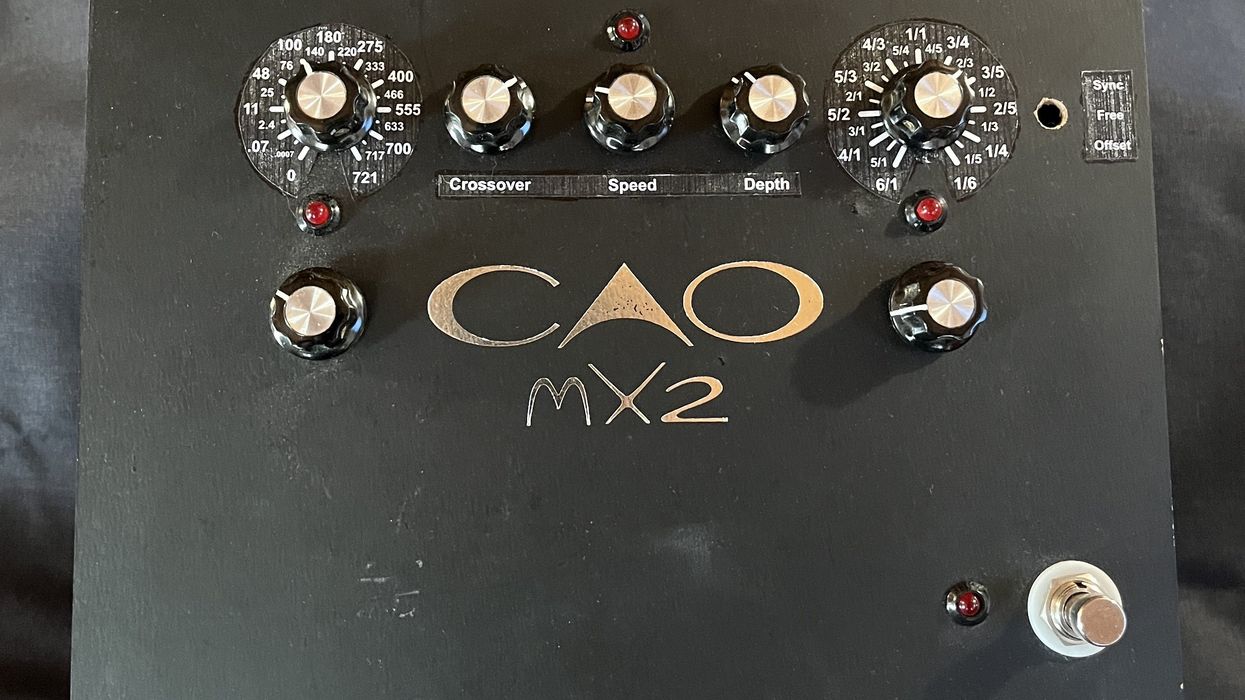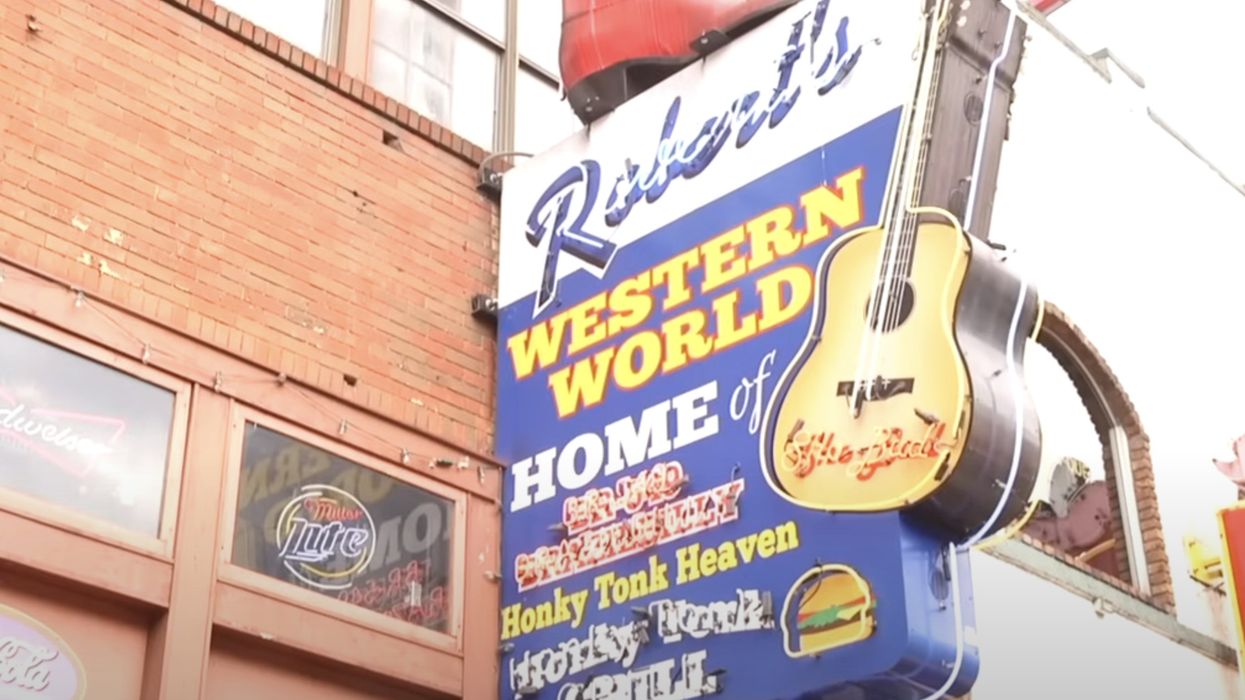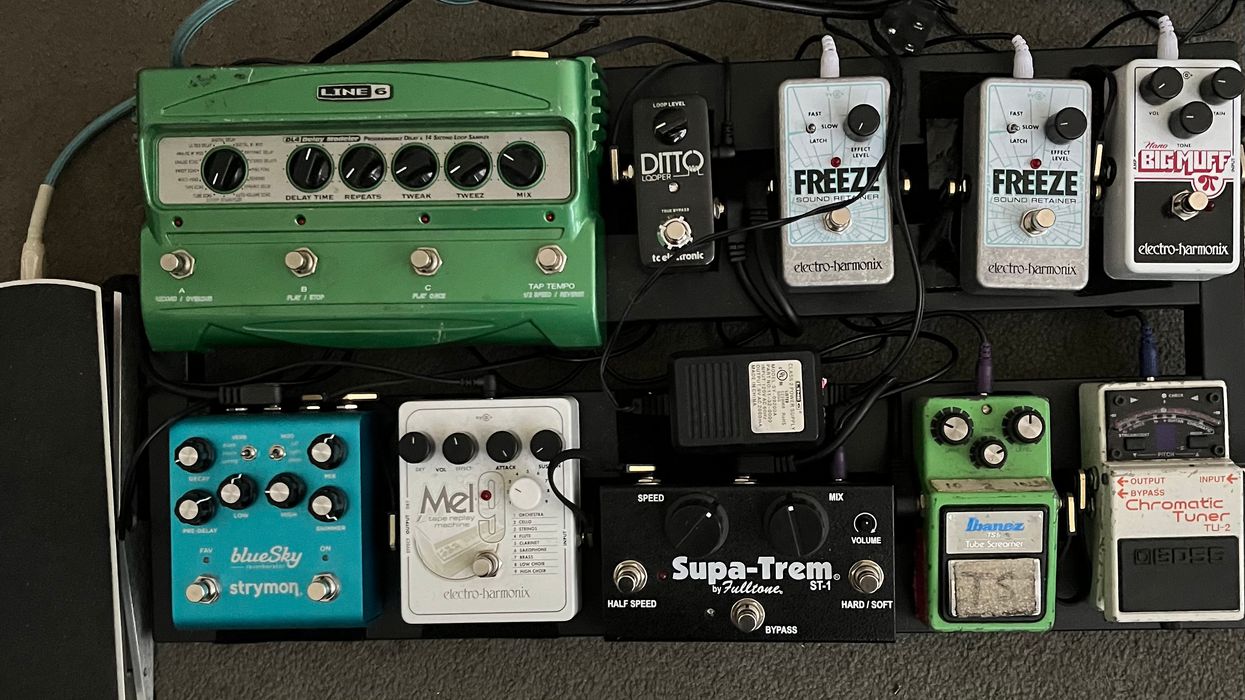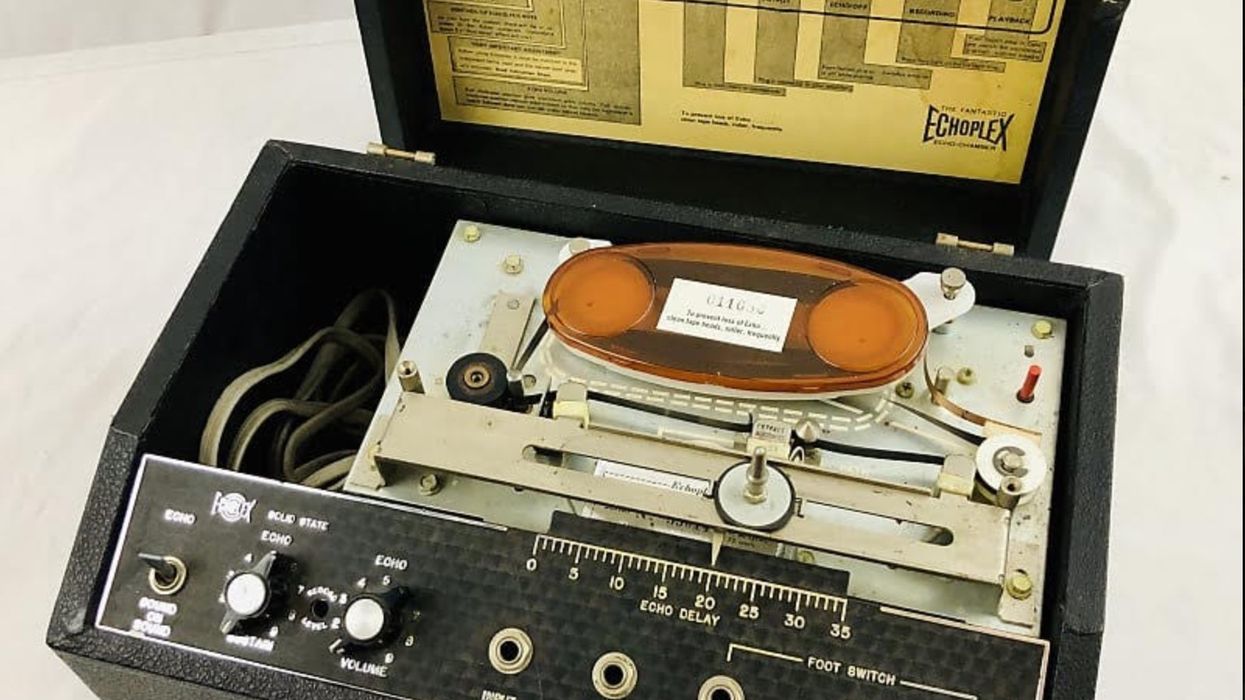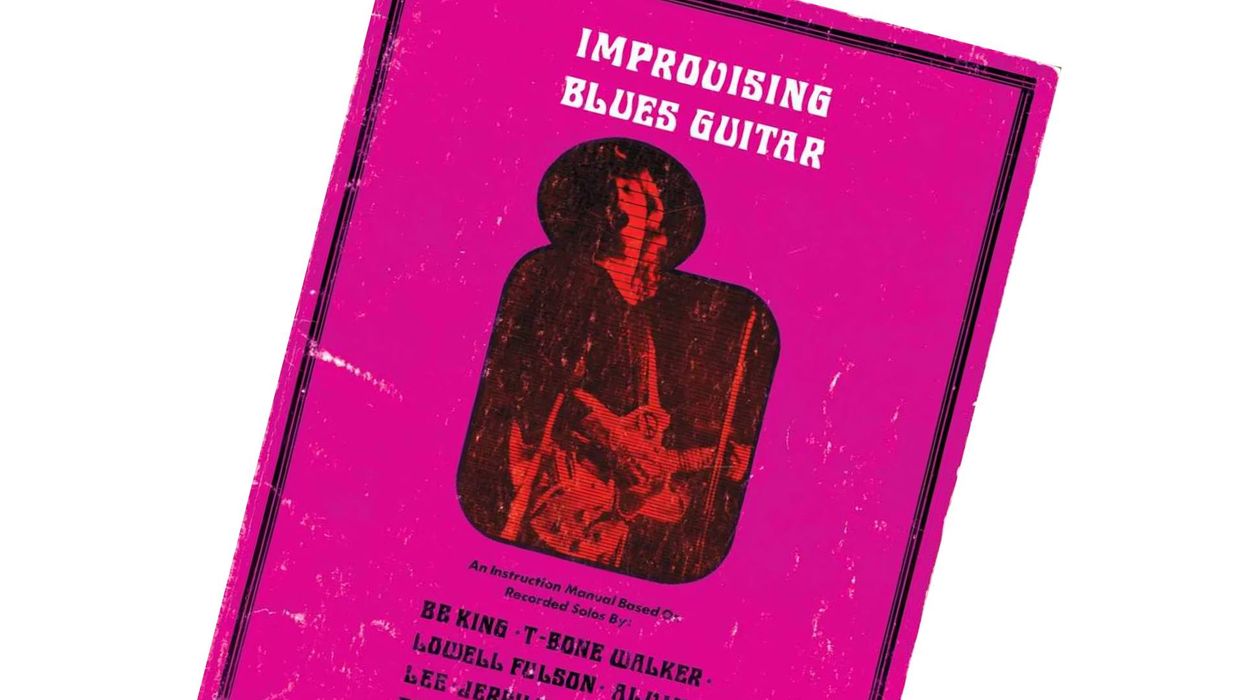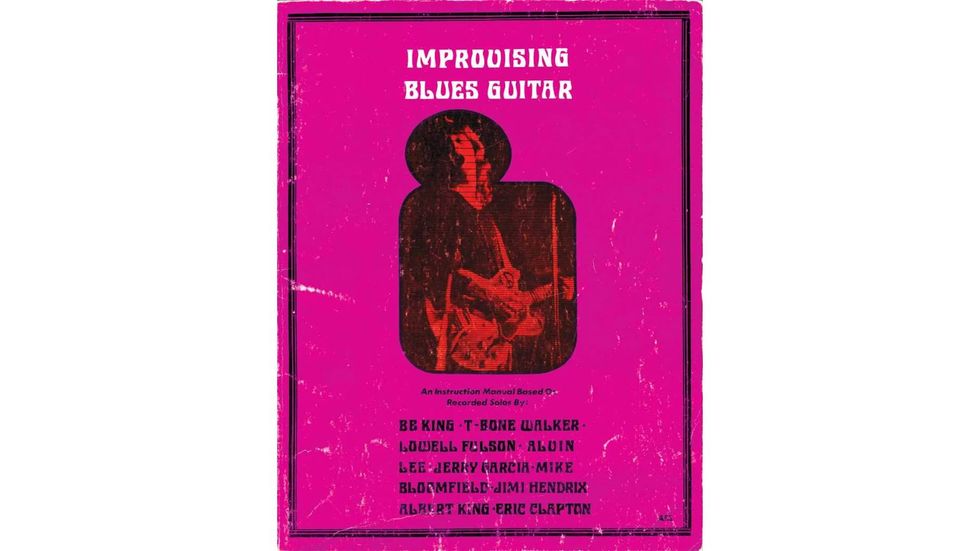I first heard open guitar tunings while in college, from older players who’d become friends or mentors, and from various artists playing at the Delta Blues Festival in the early mid-’80s, which was held in a fallow field in Freedom Village, Mississippi—whose topographical limits likely did not extend beyond said field.
I remember Jessie Mae Hemphill wearing a full-length leopard-print coat and black cowboy hat in the September heat, walking through the crowd selling 45s, and James “Son” Thomas singing his bawdy version of “Catfish Blues.” Also, an assembly of older gentlemen passing a pint bottle, all wearing vests with the name of their fraternal society sewn on the back: Dead Peckers Club.
I played in master minimalist Bo Ramsey’s band from 1988 to ’90. Living in Iowa City, attending grad school for poetry, weekend gigs with Bo were another equally important kind of education. He was the first guy I played in a band with who used open tunings. Nothing exotic: open G or open E, early Muddy Waters and Elmore James. Music I had loved since growing up in Louisiana. This was our bond, the music we both considered bedrock. Some of my first songs, written for that band, featured Bo on slide guitar.
I moved to Nashville in 1992, a city already populated with a few friends—some from Iowa, some from Louisiana. Buddy Flett was from Shreveport; I’d loved his playing since seeing him in the band A-Train in the early ’80s. We’d go eat catfish at Wendell Smith’s, and inevitably talk about songs. He’d achieved some success as a writer, working with fellow north Louisianan David Egan, employing his own kind of sleight-of-hand mystery in both G and D tunings.
In 1993, I found a guitar that would change my life and my songwriting: a scrappy Gibson ES-125 from 1956, standing in a corner of a friend’s apartment in Nashville, covered in dust. I asked if I could borrow it, for no particular reason other than to get it out of there so that it would be played. I wrote a song on it, in double drop-D tuning [D–A–D–G–B–D]. Not a great song, but it got me thinking about open strings and tunings again. I was looking for a way to play solo shows that reflected where I came from, and where the songs came from that I was writing.“The droning aspect of open tunings always appealed to me, and in the context of solo gigs, the big sound of octaves ringing out helped this insecure guitar player sound a little taller, wider . . . something.”
So, I put the guitar in open D [D–A–D–F#–A–D], put flatwounds on it, and started figuring out chord shapes (other than barring flat across) that I could use to play my songs, all of which at that point had been written and performed in standard tuning. I’d bought a ’64 Fender Princeton amp years before, when I was 19, but had never found a use for it until now: The 125 through the Princeton on about four was the sound. The droning aspect of open tunings always appealed to me, and in the context of solo gigs, the big sound of octaves ringing out helped this insecure guitar player sound a little taller, wider . . . something. The fingerings I came up with all seemed to mask the third of the scale—so you’d have a big sound which was neither major nor minor. And for my songs, it just felt right. By the time I recorded my second album for Shanachie, Down to the Well, in 1999, I was writing songs in open D (“Pueblo Dog”). For the next two albums, released in 2005 and 2012, the majority of the songs were written and performed live in open D, employing a capo when necessary.
As usual, the methods and habits developed while touring fed back into the writing and recording processes. For my latest release, The In Between, though, most of the songs were written and recorded in standard—“Simple Things,” “Tammy Cecile,” “Coming Up”—with some exceptions, including “Keeping My Brother Down,” “You Can’t Hurt Me No More,” and the title track, on which I play a ’50s Gibson electric tenor archtop in a peculiar tuning: C–G–C–G. Though I can’t say that open tunings make for better songs, they do help me hear chords differently, at times suggesting progressions that I wouldn’t normally think of. One song currently in-progress has these verse changes: VIm / I / VIm / I / VIm / I / II / II. In standard tuning, that VI would sound (to my ear) too bright. But because I’m writing it in open D, how I fret the VI sounds low and dark, appropriate for the lyric and melody, creating the right setting for the lines and story to unfold.


